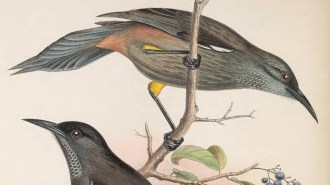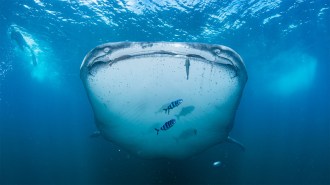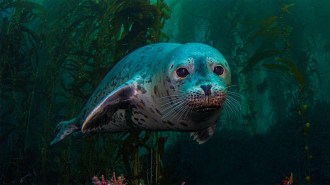Streamers could save birds from hooks
Fluttering streamers could save seabirds from fatal encounters with many longline


fishing boats, according to a big study.
The streamers could also save part of the U.S. fishing fleet from the financial
consequences of accidentally killing endangered species, says Ed Melvin of the
federally funded Washington Sea Grant Program in Seattle. Short-tailed albatrosses
are so rare that if the entire fishing fleet in the Bering Sea and the Gulf of
Alaska catches as few as two on longline hooks in 2 years, the Endangered Species
Act will kick in and require more protection for the birds.
The study focused on demersal longline fishing boats, which trail lines of baited
hooks to the depths of such species as cod and halibut. Birds crowd around to
snatch waste but sometimes lunge for the hooks. U.S. regulators already require
some kind of warning object above the hooks. Before tightening regulations,
however, they sought data on what really works.
After 2 years of testing bird-protection devices, Melvin and his colleagues report
that streamers dancing from two strings suspended behind the boat can keep
seabirds away from the hooks as they sink off the boat’s stern. The project’s
formal report is still in review, but Melvin offered a preview at the American
Ornithologists’ Union meeting in Seattle last week. In on-water tests, the
streamer system cut the accidental deaths of seabirds by 94 percent, he said.
Thorn Smith of the North Pacific Longline Association in Seattle praises the study
for including the fishing industry, as well as regulatory agencies. Wide input
proved “absolutely essential,” says coinvestigator Julia K. Parrish of the
University of Washington in Seattle. Usually, “that step . . . is sadly lacking in
conservation,” she says.
Smith urged the researchers to seek more realistic results by doing their tests on
commercial fishing vessels during normal operations rather than vessels chartered
specifically for research. Also, the 2-year study gauged the devices’
effectiveness over a period that reflects the natural variability in seabird
numbers.
The testers sighted the endangered short-tailed albatross a few times, but never
saw one hooked. Most of the world’s remaining 1,500 of these birds breed on the
active volcano of Japan’s Torishima island, but they forage widely. “When a bird
gets that endangered, every one counts,” explains endangered species biologist
Greg Balogh of the U.S. Fish and Wildlife Service in Anchorage.
The streamer setup “is one of the cheapest alternatives we have,” he says. Parrish
estimates that perhaps $150 would outfit a boat. Regulations may eventually
require them on U.S. vessels. Parrish says she dreams that some philanthropist
will one day buy devices for boats around the world.






